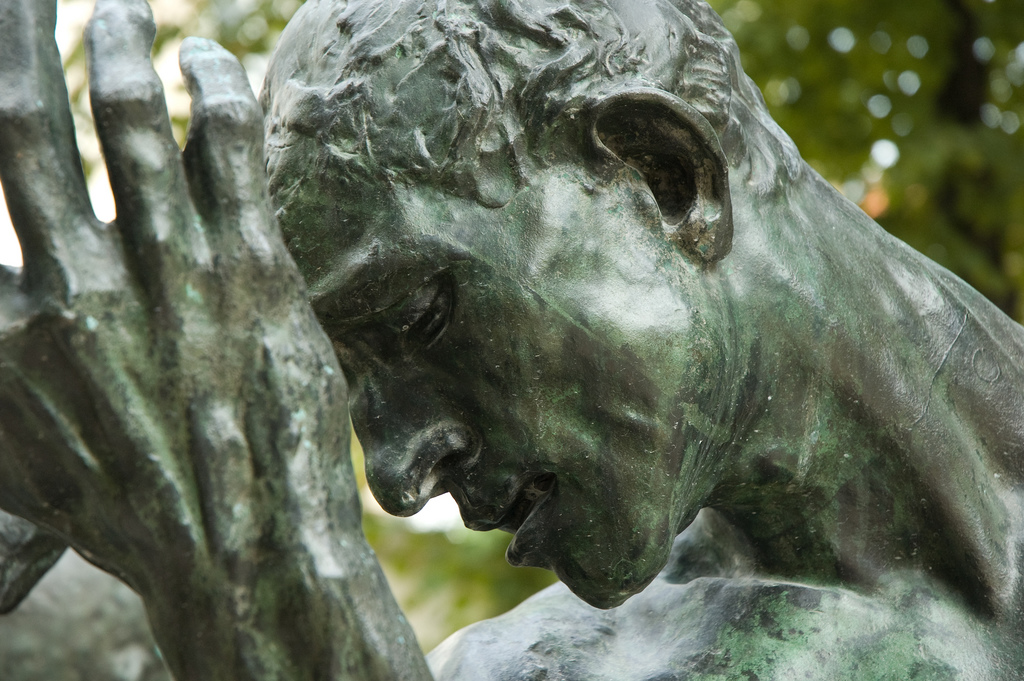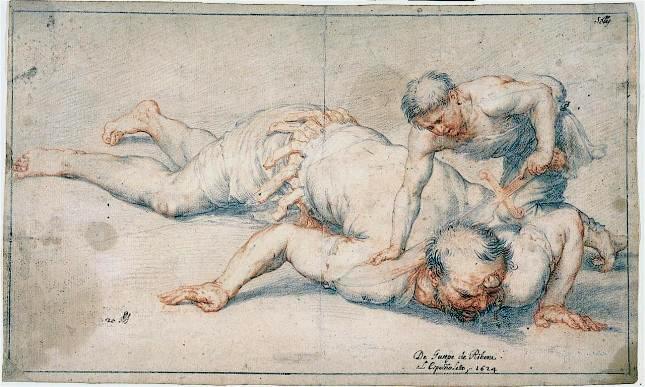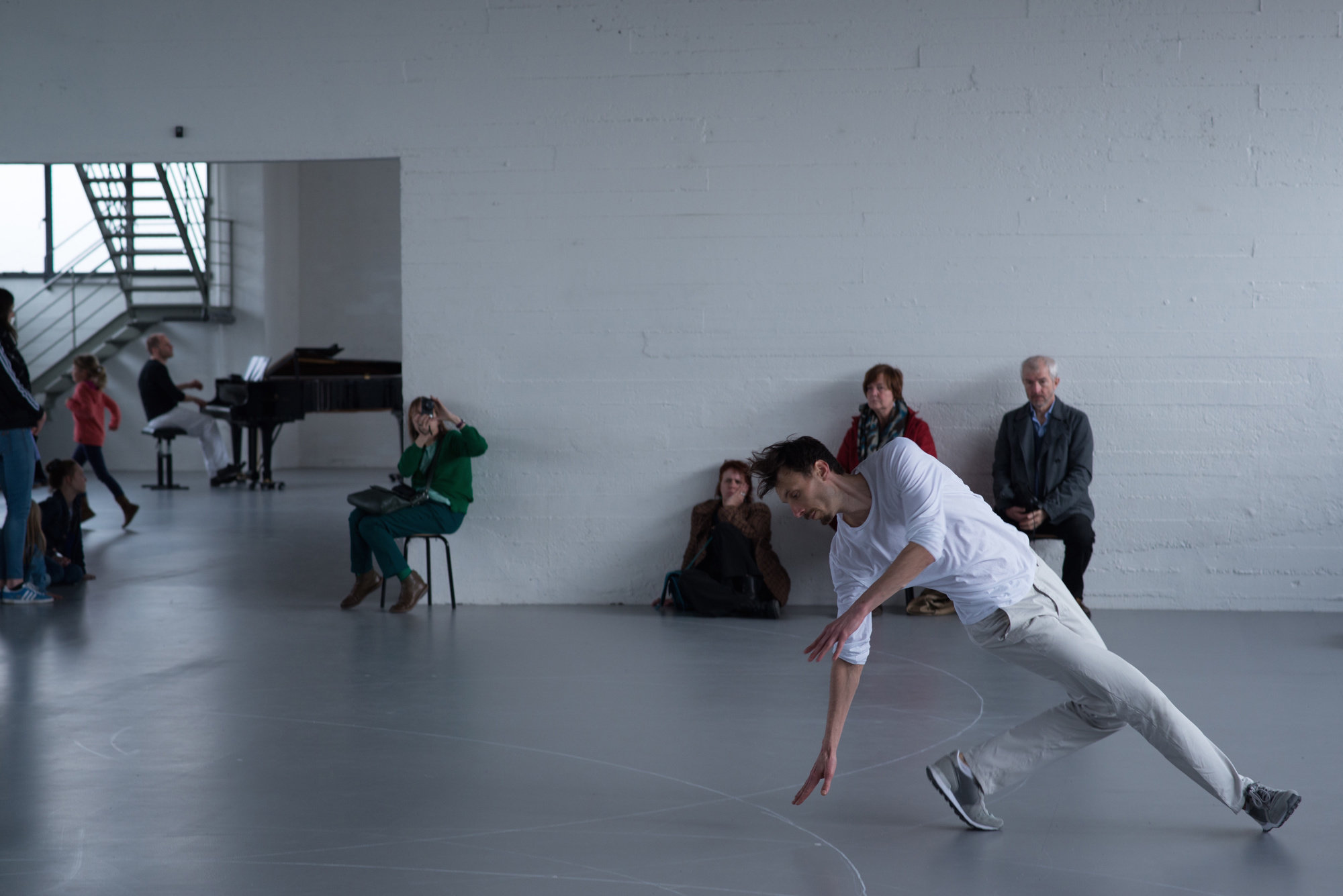March 2017

Auguste Rodin. The Burghers of Calais. 1884–89. Bronze. Musée Rodin, Paris.
Rodin
Grand Palais, Paris
Opens March 22
Ever the bargain hunter, Walter Benjamin wrote from firsthand when he published his seminal essay on works of art and mechanical reproduction. Back in 1914, some 22 years before he wrote his treatise, Benjamin informed a friend that “I recently bought a very beautiful reproduction of a Rodin watercolor,” at the excellent price of one mark. Rodin, of course, was known more for his naturalistic bronzes than for his watercolors — though a copy of the former would have cost Benjamin more than a mark — and yet the philosopher’s analysis of the passage of an artwork from original to copy has relevance for sculpture too. Whereas a single Mona Lisa and a single Olympia exist, you can find over 25 official castings of The Thinker, that hunched-over, ponderous figure, and numerous later casts as well. He broods on plinths from Stockholm to Shizuoka, from a Jesuit college in Jakarta to the Bakırköy Psychiatric Hospital of Istanbul. And that’s only in the original 72-inch format; there are smaller Thinkers too, mini-philosophers in plaster or metal that frequently bob up at auction. To add to the confusion, Rodin may not have considered the consequences of proliferating his own works. In his lifetime, he authorized at least 319 editions of his embracing couple in The Kiss — which looked rather more romantic in a standalone format than in its original position on The Gates of Hell.
For Rosalind Krauss, Rodin was the quintessential modern sculptor, insofar as the proliferation of copies served to erase the pretense of any original. But even the most gleeful postmodernist must have cause to wonder about the posthumous production of Rodin’s work. Upon his death, he entrusted his estate to the Musée Rodin, which has the right to continue making original pieces using his bequeathed plasters (up to the 12-edition limit for each, as French law dictates). The Musée Rodin’s exclusive license to produce “originals” has generated substantial revenues — it is France’s only non-subsidized national museum, and recently self-funded the majority of its $17 million renovation. Go ahead and decry monopoly, but other attempts at producing Rodin’s work have been dubious at best and counterfeit at worst. In 2001, the Royal Ontario Museum showed a highly controversial Rodin exhibition of 11 newly fabricated pieces by an Italian company claiming to be in possession of original plaster casts. A couple years ago one of them crumbled.
Now, on the eve of the centennial of his death, the Grand Palais will show a retrospective of Rodin’s work that should be the blockbuster of the Paris spring season. No question of authenticity at this celebratory affair; organized in conjunction with the Musée Rodin, the sculptures presented largely pre-date his death — and as such are as Rodin intended, from form to detail, finish to patina. It’s a welcome opportunity to see “originals” on such a grand scale, given the increasingly confounding landscape of editions and reproductions. After all, still four more original castings of The Gates of Hell are “available”; one was just dropped off at Mexican billionaire Carlos Slim’s Museo Soumaya in 2015. One wonders how much 1917 aura you can still ship in 2017.

Adiós Utopia: Dreams and Deceptions in Cuban Art Since 1950
Museum of Fine Arts, Houston
Opens March 5
Ever since the US relaxed travel restrictions two years ago, the island nation has become the de rigueur destination for a long Caribbean weekend. But lest we forget the dark turns of its socialist experiment, this show of Cuban art — the most stateside exhibition since the Bay of Pigs — should remind us that aspirations for utopia don't always pan out. A hundred works, exclusively by artists who stayed in Cuba rather than went into exile, will be sure to recontextualize your next vacation. Travels to Minneapolis in November.
Bill Viola
Palazzo Strozzi, Florence
Opens March 10
After college, the video art pioneer spent more than a year in Florence; now his meditative experiments in space and sound return to the city for his first major Italian retrospective. Viola’s later pieces have often featured slow-moving figures in explicitly Renaissance-quoting poses; this show, uniquely, will display his video works alongside older painting.
Friedrich Kiesler
Martin-Gropius-Bau, Berlin
Opens March 11
He was most famous for his unrealized projects; Philip Johnson used to call him, fondly, “the greatest non-building architect of our time.” Just last year, MoMA devoted an exhibition to Kiesler’s “Endless House” — a living organism of a home with no corners or interior walls — and now comes a substantial retrospective of the brilliant, kooky Austrian, whose ambitions ranged from Surrealist writings to the window display at Saks.
Between Heaven and Hell: The Drawings of Jusepe de Ribera
Meadows Museum, Dallas
Opens March 12
In Rome they called him Lo Spagnoletto — “the little Spaniard” — and in the early 17th century, Ribera's paintings were seen as worthy rivals to those of his predecessor Caravaggio. But where Caravaggio never drew, Ribera set down on paper the same acute expressions of horror and grotesque that he painted on canvas. On view are 71 drawings of high drama, fresh from the Prado in Madrid.

Whitney Biennial
Whitney Museum of American Art, New York
Opens March 17
Delayed for a year as the museum settled into its new riverside digs, this year’s edition of the ever-scrutinized roundtable is organized by Christopher Lew and Mia Locks. The latter helped mount PS1’s "Greater New York," and this show may share that one’s rent-is-too-damn-high political bent. One big standout among the 63 artists: Kaari Upson, interviewed in Even No. 4.
Anne Teresa De Keersmaeker
Museum of Modern Art, New York
Opens March 29
In her first museum project, the exacting Belgian choreographer is presenting dance as exhibition, and reworked her piece Work/Travail/Arbeid for gallery viewing at WIELS in Brussels, the Pompidou in Paris, and Tate Modern in London. Now the living exhibition arrives at its last stop, and the dancers of her troupe Rosas will perform continuously in the atrium throughout the museum’s nine opening hours. It’ll be hard for Beyoncé to rip off this one.
The National
Art Gallery of New South Wales, Museum of Contemporary Art, and Carriageworks, Sydney
Opens March 30
A brand-new triennial spans the three leading arts institutions of a beautiful city, but its vocal restatement of the significance of indigenous art and immigrant voices to Australian culture is not just commemorative. Thanks to a recent, undiplomatic phone call between the new American president and the Australian prime minister, the status of Manus Island refugees is once again up in the air — and these multimedia expositions of racism and displacement have taken on new and concrete political dimensions.
Zhang Peili
Art Institute of Chicago
Opens March 30
You may have clocked the giant close-up of his face squinting at you on the cover of last month’s Artforum, and now the father of Chinese video art is receiving his first major American survey. Unlike some of his fellow countrymen, who he claims are famous “because of political reasons and not because of [their] art,” Zhang has managed to keep the discussion on his work, from early documents of repetitive studio actions to chopped-and-screwed edits of Mao-era soap operas.